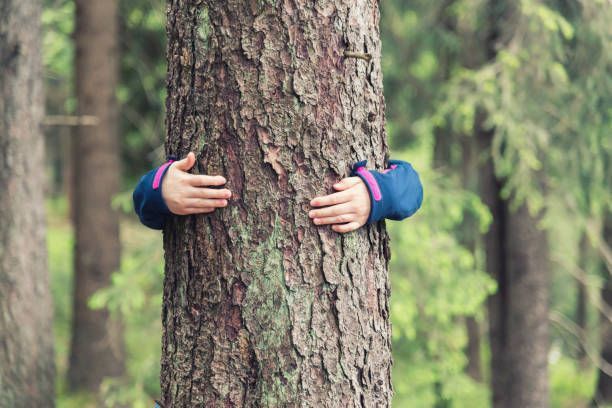Protecting Trees During Construction
Tips for Connecticut Builders and Homeowners

Trees are valuable assets to any property, providing shade, beauty, and environmental benefits. However, during construction projects, trees are often at risk of damage or destruction due to excavation, compaction, and other construction activities. Protecting trees during construction is essential to preserve their health and longevity, maintain property value, and uphold environmental sustainability. In this comprehensive guide, we'll explore practical tips and best practices for Connecticut builders and homeowners to protect trees during construction projects.
Understanding the Importance of Tree Protection
Trees play a vital role in Connecticut's landscape, contributing to air quality, wildlife habitat, and aesthetic appeal. Preserving existing trees during construction helps maintain the ecological balance, mitigate stormwater runoff, and reduce the urban heat island effect. Additionally, mature trees add value to properties and enhance the quality of life for residents. Protecting trees during construction is not only a responsible environmental practice but also a wise investment in the long-term health and beauty of the landscape.
Assessing Tree Health and Vulnerability: Before beginning any construction project, it's crucial to assess the health and vulnerability of trees on the property. A qualified arborist can conduct a tree risk assessment to identify any existing health issues, structural weaknesses, or environmental stressors that may make trees more susceptible to damage during construction. Trees with compromised health or structural integrity may require special protection measures or even removal to prevent safety hazards during construction.
Creating a Tree Protection Plan
Developing a tree protection plan is essential to safeguard trees during construction. The plan should outline specific measures to minimize the impact of construction activities on trees, including fencing, root protection zones, and monitoring protocols. The tree protection plan should be integrated into the overall construction schedule and communicated to all parties involved in the project, including contractors, subcontractors, and landscapers.
Implementing Tree Protection Measures
Once the tree protection plan is in place, it's time to implement protective measures to safeguard trees during construction. Here are some effective strategies:
· Establishing Tree Protection Zones (TPZs): TPZs are designated areas around trees where construction activities are restricted to minimize root damage and soil compaction. The size of TPZs varies depending on the tree species, size, and root spread.
· Installing Tree Fencing: Temporary fencing should be installed around the perimeter of TPZs to prevent heavy machinery, construction materials, and foot traffic from encroaching on protected trees. Fencing should be sturdy, clearly marked, and regularly inspected for damage.
· Mulching and Soil Protection: Applying a layer of mulch within TPZs helps retain moisture, regulate soil temperature, and reduce compaction. Avoid piling mulch against tree trunks, as this can promote rot and fungal growth. Additionally, installing geotextile fabric or plywood sheets over sensitive root zones can protect the soil from compaction and erosion.
· Minimizing Soil Disturbance: Limiting soil disturbance within TPZs is crucial to preserving root health and structure. Heavy machinery should avoid driving or parking near trees, and construction debris should be kept clear of root zones. Excavation and trenching should be done with caution to avoid damaging roots.
· Pruning and Tree Maintenance: Pruning dead or damaged branches before construction begins can improve tree health and reduce the risk of branch failure during construction. Regular monitoring and maintenance of trees throughout the construction process help identify and address any issues promptly.
· Watering and Irrigation: Providing supplemental water during dry periods helps mitigate stress and dehydration for trees, especially those within TPZs. Irrigation systems can be installed to deliver water directly to root zones and ensure adequate hydration during construction.
What Are The Potential Consequences Of Failing To Protect Trees During Construction Projects?
Failing to protect trees during construction projects can have significant consequences, both immediate and long-term, for the environment, property owners, and the community as a whole. Here are some potential consequences of neglecting tree protection measures during construction:
· Tree Damage and Loss: Without adequate protection, trees are vulnerable to damage from heavy machinery, construction debris, soil compaction, and root disturbance. Tree limbs may be broken, bark may be damaged, and roots may be severed, leading to reduced tree health, structural instability, and eventual decline or death.
· Decline in Property Value: Trees are valuable assets that enhance property value and curb appeal. Damage or loss of mature trees during construction can diminish the aesthetic appeal of the landscape and reduce property values. Trees provide shade, privacy, and visual interest, and their absence can negatively impact the overall desirability of the property.
· Environmental Degradation: Trees play a crucial role in maintaining ecological balance and supporting biodiversity. They provide habitat for wildlife, improve air quality, sequester carbon dioxide, and regulate temperature and humidity levels. Failing to protect trees during construction can disrupt
local ecosystems, reduce habitat availability for wildlife, and contribute to environmental degradation.
· Increased Stormwater Runoff: Mature trees help absorb rainwater and reduce stormwater runoff, which helps prevent soil erosion, flooding, and water pollution. Removing or damaging trees during construction can increase the amount of runoff, leading to erosion, sedimentation, and contamination of waterways. This can have adverse effects on water quality, aquatic habitats, and overall watershed health.
Failing to protect trees during construction projects can result in tree damage and loss, decline in property value, environmental degradation, increased stormwater runoff, and legal and financial liabilities. Implementing proper tree protection measures is essential to minimize these risks and preserve the health, beauty, and sustainability of the landscape for future generations.
Protecting trees during construction is a critical responsibility for Connecticut builders and homeowners to preserve the natural beauty, ecological value, and long-term health of the landscape. By assessing tree health and vulnerability, creating a comprehensive tree protection plan, and implementing effective protective measures, construction projects can proceed while minimizing the impact on trees. With careful planning, proactive management, and collaboration among all stakeholders, trees can thrive alongside development, enhancing the beauty and sustainability of Connecticut's built environment for generations to come.
Contact Us
We will get back to you as soon as possible
Please try again later

Website Managed by
Leads By Vinny